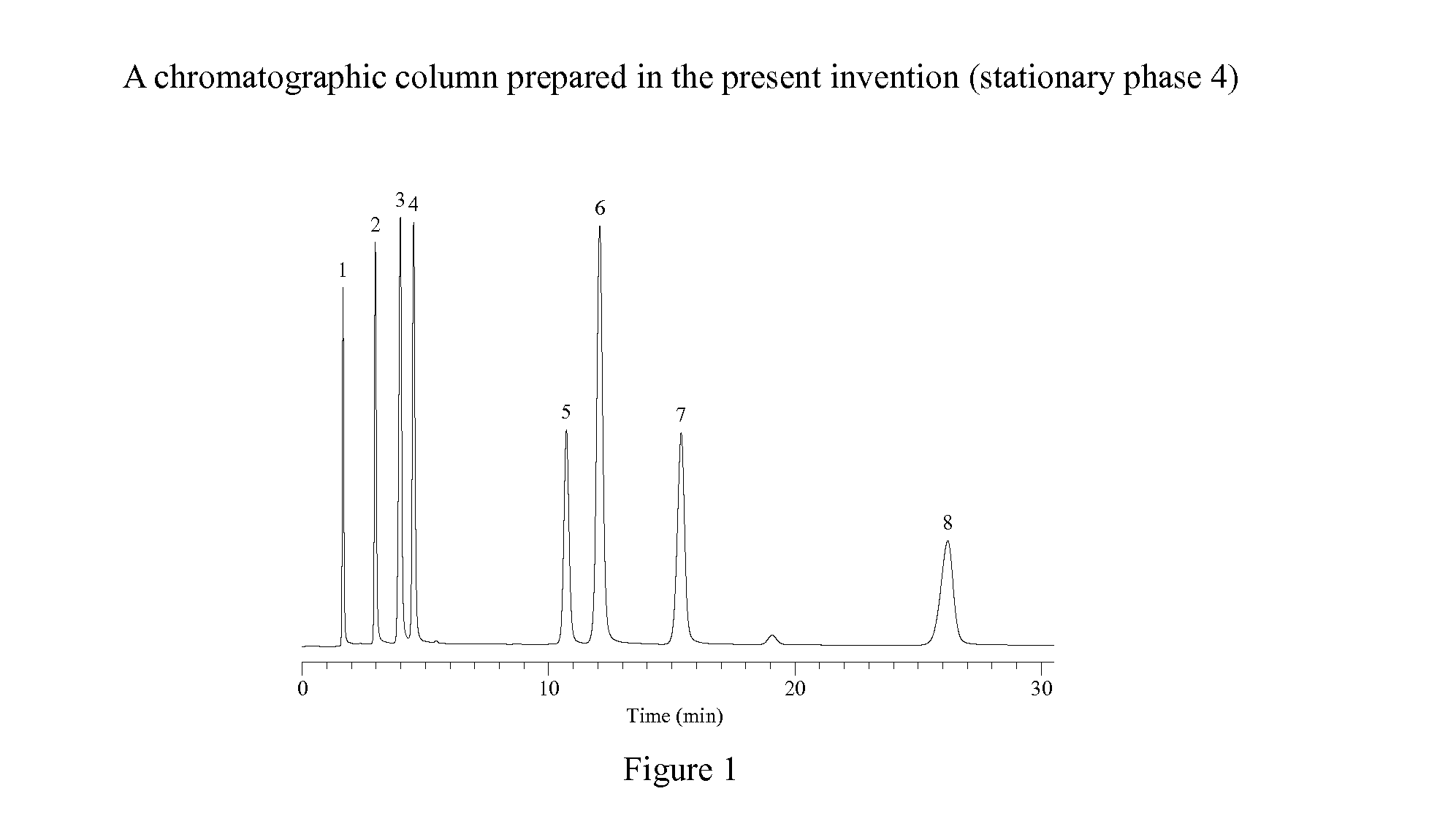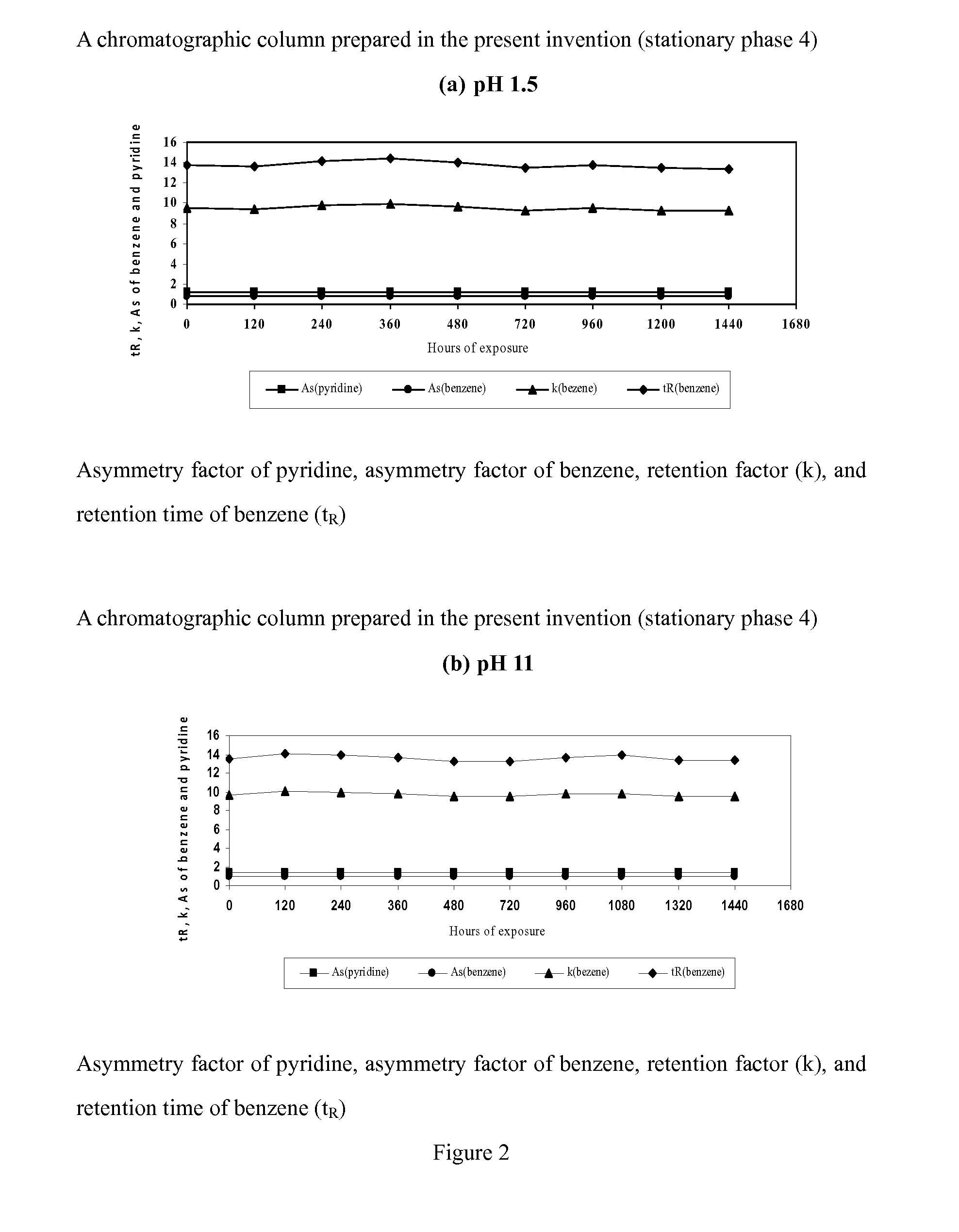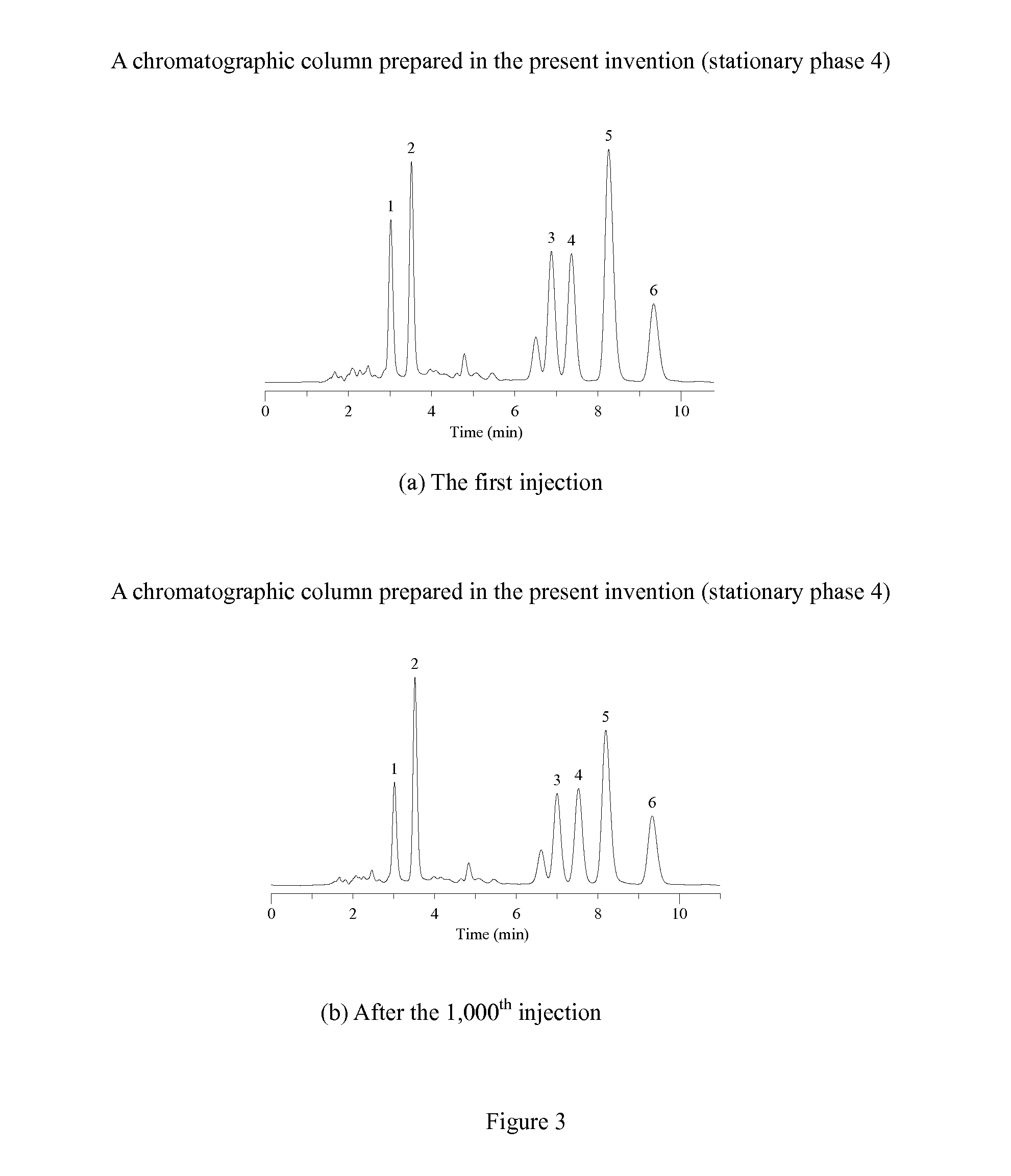Novel Liquid Chromatographic Media and Methods of Synthesizing the Same
a liquid chromatographic media and liquid chromatographic technology, applied in the field of liquid chromatographic media preparation, can solve the problems of severe tailing, deformation of chromatographic peaks, and inability of silanol groups on the surface of silica gel to completely react with a silane reagent, so as to improve the chromatographic peak shape of basic compounds, novel structure, and better shield the activity of silanols
- Summary
- Abstract
- Description
- Claims
- Application Information
AI Technical Summary
Benefits of technology
Problems solved by technology
Method used
Image
Examples
example 1
General Method for Preparing a Polar Silane Having Two Amide Linkages
[0089]
[0090]Wherein R is substituted or unsubstituted C1-C20 alkyl, phenyl, aralkyl, cycloalkyl, or heterocycloalkyl.
[0091]CH2Cl2 (100 mL), glycine (II) (20 mmol) and triethylamine (5 mL) were added into a three-necked flask. The mixture was vigorously stirred in an ice bath. A solution of compound I (20 mmol) in CH2C12 (20 mL) was added dropwise. The reaction mixture was stirred at room temperature for 2 to 4 hours. The crude product was purified via column chromatography to obtain intermediate product III.
[0092]To a three-necked flask were added the intermediate product III (20 mmol), N,N′-dicyclohexylcarbodiimide (22 mmol), 4-dimethylaminopyridine (1.2 mmol) and CH2Cl2 (100 mL). 3-Aminopropyltrimethoxysilane (20 mmol) was added under stirring, and the reaction mixture was stirred at room temperature for 3 to 6 hours. After completion of the reaction, the mixture was filtered, the filtrate was washed with sodium ...
example 2
[0095]The starting material is n-octanoyl chloride. Intermediate n-octanoyl glycine: 1HNMR (500 MHz, CDCl3) δ, 0.85 (t, 3H), 1.31 (m, 8H), 1.56 (m, 2H), 2.11 (t, 2H), 4.25 (s, 2H), 8.05 (s, 1H). Calc. C % 59.68, H % 9.52, N % 6.96; Found C % 59.62, H % 9.48, N % 6.99. Target product n-octyl bisamide silane: m.p. 50-52° C. 1HNMR (500 MHz, CDCl3) δ 0.86 (t, 3H), 0.97 (t, 2H), 1.29 (m, 8H), 1.53 (m, 2H), 1.62 (m, 2H), 2.09 (t, 2H), 3.35 (t, 2H), 4.12 (d, 2H), 8.01 (s, 1H), 8.06 (s, 1H). Calc. C % 41.55, H % 6.71, N % 7.45; Found C % 41.40, H % 6.82, N % 7.55.
example 3
[0096]The starting material is n-decanoyl chloride. Intermediate n-decanoyl glycine: 1HNMR (500 MHz, CDCl3) δ 0.85 (t, 3H), 1.30 (m, 12H), 1.55 (m, 2H), 2.16 (t, 2H), 4.33 (s, 2H), 8.03 (s, 1H). Calc. C % 62.85, H % 10.11, N % 6.11; Found C % 63.02, H % 10.19, N % 6.04. Target product n-decyl bisamide silane: m.p. 55-56° C. 1HNMR (500 MHz, CDCl3) δ 0.54 (m, 2H), 0.82 (t, 3H), 1.26 (m, 12H), 1.51 (m, 2H), 1.61 (m, 2H), 2.11 (t, 2H), 3.38 (q, 2H), 3.56 (s, 9H), 4.13 (s, 2H), 8.04 (s, 1H), 8.09 (s, 1H). Calc. C % 55.35, H % 9.81, N % 7.17; Found C % 55.56, H % 9.87, N % 7.03.
PUM
| Property | Measurement | Unit |
|---|---|---|
| specific surface area | aaaaa | aaaaa |
| particle size | aaaaa | aaaaa |
| retention time | aaaaa | aaaaa |
Abstract
Description
Claims
Application Information
 Login to View More
Login to View More - R&D
- Intellectual Property
- Life Sciences
- Materials
- Tech Scout
- Unparalleled Data Quality
- Higher Quality Content
- 60% Fewer Hallucinations
Browse by: Latest US Patents, China's latest patents, Technical Efficacy Thesaurus, Application Domain, Technology Topic, Popular Technical Reports.
© 2025 PatSnap. All rights reserved.Legal|Privacy policy|Modern Slavery Act Transparency Statement|Sitemap|About US| Contact US: help@patsnap.com



